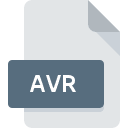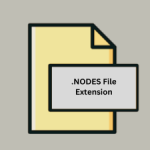.PCG File Extension

Korg Instrument Bank File
| Developer | Korg |
| Popularity | |
| Category | Audio Files |
| Format | .PCG |
| Cross Platform | Update Soon |
What is an PCG file?
The .PCG file extension is primarily associated with the ‘Programmable Computer Graphics’ file format. It is a specialized file type that is generally used in the context of 3D graphic software, CAD (Computer-Aided Design) systems, and digital audio workstations (DAWs).
These files typically contain data that enhances the functionality or adds additional presets to the associated software, ranging from graphical presets and instrument patches to complex 3D models and textures.
More Information.
The history of .PCG files can be traced back to the early days of computer graphics and digital audio processing.
Initially, these files were designed to store presets for synthesizers and other digital musical instruments. Over time, as 3D graphics and CAD software became more sophisticated, the .PCG format was adapted to store detailed graphical information as well.
The primary purpose of the .PCG file was to provide a container for storing complex settings, parameters, and designs that could be easily shared and implemented across different systems and software.
Origin Of This File.
The .PCG file format originated from the need to store complex graphical and audio presets in a standardized, portable, and compact manner.
This need was driven by the increasing complexity of digital graphics and audio projects, which required efficient ways to manage and transfer a large amount of detailed information between different systems and software.
File Structure Technical Specification.
.PCG files are structured in a binary format, meaning they are not intended to be human-readable but are designed for efficiency and compactness when read by a machine. The exact structure of a .PCG file can vary significantly depending on the software it is associated with.
Most .PCG files contain a header section that describes the file’s contents and how the data is organized, followed by the data section containing the actual presets or graphical information. This organization ensures that the file is both portable and compatible across different versions of the software.
How to Convert the File?
Converting .PCG files largely depend on the specific software they are associated with. Here’s a general guide on how to attempt the conversion:
1. Identify the Software: Understand which application the .PCG file is associated with. This could be a digital audio workstation, a CAD program, or another specialized software.
2. Use Native Export Options:
- Open the .PCG file in the respective application.
- Look for an option to ‘Save As’ or ‘Export’ the file in a different format. Many applications offer the ability to export data into more common file formats.
3. Third-party Conversion Tools:
- If the native application does not support the desired file format, you may need to use a third-party conversion tool. Be sure to choose a reputable tool to avoid data corruption.
- Note that success with third-party tools can vary as .PCG files are often proprietary and may have unique structures.
4. Manual Conversion (Advanced Users):
- If you are knowledgeable about the structure of .PCG files and the format you want to convert to, you might attempt a manual conversion. This typically involves parsing the binary data in the .PCG file and transforming it into another format. This method is complex and usually not recommended unless you have a strong understanding of both file formats.
Advantages And Disadvantages.
Advantages:
- Portability: .PCG files can be easily transferred between different systems, making collaboration and sharing of presets straightforward.
- Compactness: These files are designed to be compact and efficient in terms of storage space, which is particularly beneficial for complex presets.
- Consistency: Using .PCG files ensure that presets and settings remain consistent across different projects and systems.
Disadvantages:
- Software Dependency: .PCG files are often proprietary and can usually be opened only by the software they were created in.
- Complexity: The binary format of .PCG files make it difficult to manually edit or read without the proper software.
- Compatibility Issues: Different versions of the software or different software from the same manufacturer might have compatibility issues with .PCG files.
How to Open PCG?
Open In Windows
- Identify the Right Software: Determine which application is meant to open the .PCG file. This could be a specific 3D modeling tool, CAD software, or a music production application.
- Install the Software: Download and install the application if it’s not already installed on your system.
- Open the File: Right-click on the .PCG file, select “Open with,” and choose the application you installed. Alternatively, open the application first and then use its file opening interface to navigate to and open the .PCG file.
Open In Linux
- Find Compatible Software: Linux users might have fewer options for proprietary software. However, some applications may have Linux versions or alternatives.
- Install the Application: Use your distribution’s package manager or download the software from the official website.
- Open the File: Open the application and use its interface to open the .PCG file. You might also be able to open the file by right-clicking it, depending on your Linux distribution and desktop environment.
Open In MAC
- Software Availability: Check if the software that opens the .PCG file has a macOS version.
- Install the Software: Download and install the application from the App Store or the official website.
- Open the File: Similar to Windows, right-click on the file and select “Open with,” then choose the installed application. Or, open the application first and use it to open the file.
Open In Android
- App Availability: Due to the specialized nature of .PCG files, it’s less common to find Android apps that can open them. However, for certain file types, especially those related to digital audio workstations, you might find specific apps.
- Install the App: If available, download and install the app from the Google Play Store.
- Open the File: Use the app to navigate to the location of the .PCG file and open it. File management might require additional permissions or a file management app.
Open In IOS
- Check for Apps: As with Android, iOS might have limited options. For .PCG files related to audio workstations, there may be iOS apps available.
- Install the App: Download the app from the App Store if it’s available.
- Open the File: Use the app to open the .PCG file. iOS’s Files app can also be used to browse and manage your files, making it easier to locate and open them with the appropriate app.













